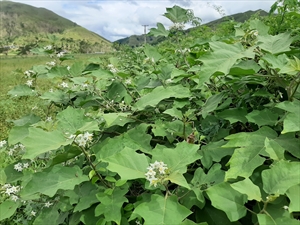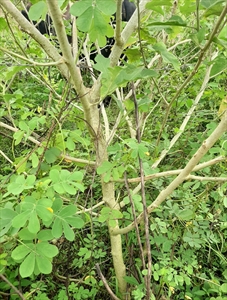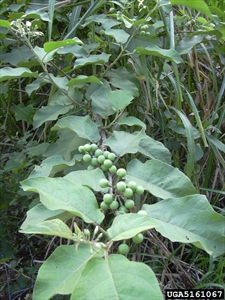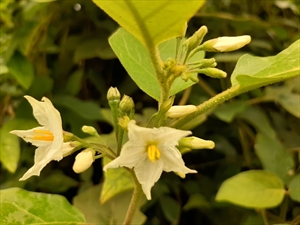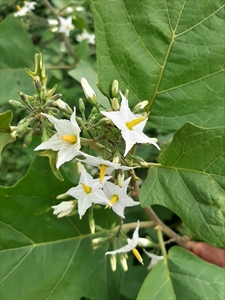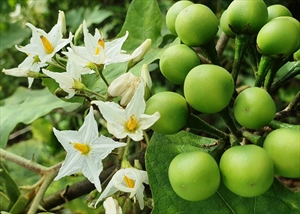- Widespread. Africa, Asia, North (Hawaii), South and Central America, Caribbean, Europe, Oceania. In most Pacific islands
- Invasive, large amounts of seeds, easily spread, drought tolerant, ability to displace local vegetation, forming dense thickets at forest margins, waterways, plantation crops, roadsides, pastures, disturbed sites and waste areas.
- Small shrub/tree, up to 4 m. Young stems, green/purplish, soft, with small star-shaped hairs, and spines; later, brown/greenish-brown lacking hairs. Leaves, up to 25 cm long, deeply lobed when young, roughly oval when old, with spines. Flowers, star-shaped, five white petals, in clusters of 15-100 at the end of stems. Fruits (berries) with few to many flat, woody, often reddish seeds.
- Spread: seeds by birds and bats; water; soil, trash; seed traded on internet, contamination of traded plants.
- Biosecurity: high risk of introduction, showy flowers, used as root stock. Available on internet.
- Biocontrol: a chrysomelid beetle in Caribbean but confirmation of suitability needed.
- Cultural control: dig out (gloves!), removing crown; plough, check for regrowth.
- Chemical control: in Australia: picloram + 2,4-D (cut back and spray regrowth). In PNG: 2,4-D in diesoline (petrol with addition of 15% diesel) to treat stumps. Cut 10-15 cm above ground level. In Fiji, glyphosate.
